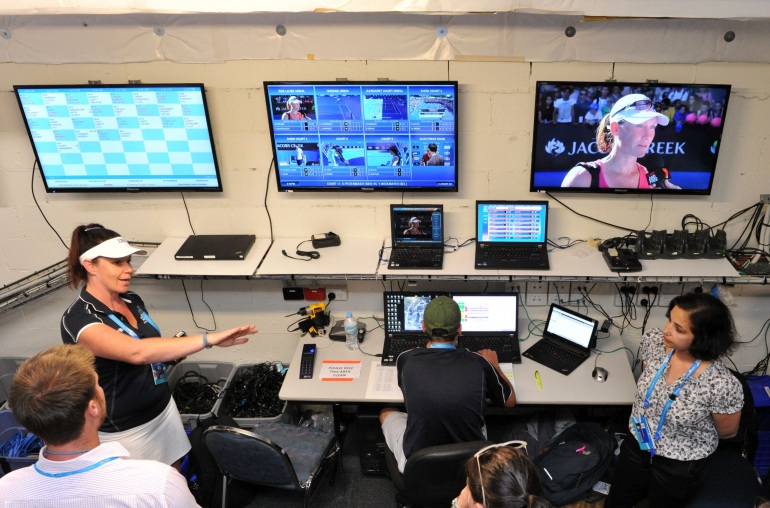How the Australian Open turns match data into dollars

IBM shows off the server room that drives the operations of the Australian Open. Photo courtesy of IBM.
In a windowless bunker located meters away from the Rod Laver Tennis court, a team of IBM engineers are working feverishly to turn mundane match statistics into a money-spinner.
They’re processing the data emerging from several matches across the grand slam, computing every fault, forced error and break point. It’s all registered and recorded by the match umpire on a mixture device known as a CHUMP that sits neatly on the official’s chair.
From here, it's cross-checked by two courtside statisticians, processed and placed on the web in near real-time to sate the appetite of a ravenous audience of tech-savvy tennis fans, who now demand more than just an updated scorecard.
This is just one example of a new era in sport where it seems the data produced by the game is treated with as much reverence as the match itself. In this instance, the grand slam may serve up a crowd, but the data it produces helps both IBM and Tennis Australia maximise their returns from the event.
Last year it helped Tennis Australia’s advertising-driven websites and apps draw in around 15.5 million unique visitors during the course of the Open, bolstering the reach and the influence of the event.
The lure of real-time analytics and immediate video replay technology also helped Tennis Australia drag 750 sports journalists from around the world away from their desks and to the Open in 2013. A considerable feat, given that most match reporting can be easily accomplished from a distance.
For IBM, the Australian Open is perhaps the best showcase of its capabilities that a multinational technology company could ask for.
As IBM’s sponsorship leader Angela Gallo puts it, it’s better to tour clients around the Open than “boring them to death with power point presentations”.
All of this involvement with match statistics plays seamlessly into the company’s current enterprise big data push, which is remarkable considering that the company initially established its relationship with the event over two decades ago. Back then, it worked on hosting its website rather than managing its match data.
This data-driven agenda has pervaded the Open for the past three years. As a result, we’ve already covered some of IBM’s other data-related innovation, including its SlamTracker interface and its Social Leaderboard.
Its crowning achievement this year is much more remarkable than previous innovations. It’s a tennis simulator that uses real match data, motion sensors and an oculus rift headset to allow a player virtually front and return serve from one of the Open’s top players. It's an interesting showcase for both data visualisation technology and the rift, which is set to make its mainstream debut in the near future.
As for where data will take the Australian Open from here, Tennis Australia’s CIO Samir Mahir seems to think that enhanced predictive analytics will be the next step.
It’s likely that the many sports betting sites surrounding the game would raw access to their data pool. But it’s interesting to note that so far IBM and Tennis Australia say they have kept those companies away from their stats.
The synergies devolved from the partnership between IBM and Tennis Australia serves a rather stark contrast the role technology – particularly social media – played during the 2012 London Olympics.
Much like the Olympics, Tennis Australia relies on advertising and sponsorships (it calls them ‘partnerships’) to generate return from the event. It’s a wonder whether the IOC is looking to events like the Australian Open ahead of the Rio 2016 Olympics in an attempt to figure out how it can protect and even enhance its revenues without having to ban or vet the use of every new internet-based technology.
Harrison Polites attended the Australian Open as a guest of IBM.
Correction: This story originally claimed that IBM offered free tickets to the Tennis as a sweetener for deals. This is incorrect. A spokeswoman confirmed that the company has a policy of not offering event sponsorship tickets to clients during the negotiation of deals.















